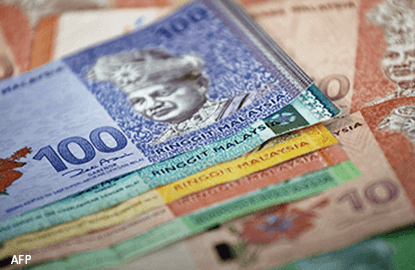
SINGAPORE (June 1): The Malaysian ringgit has recovered substantially since falling to a record low of 4.45 against the US dollar in September last year. On June 1, the USD/MYR traded at 4.15, a level which is still undervalued against the currencies of Malaysia’s trade partners.
Yet, Heng Koon How of Credit Suisse warns that the MYR will likely weaken further as the year draws on. “The fundamental outlook for the MYR remains challenging,” writes Heng in a Wednesday report.
Here are five reasons why the odds are stacked against the Malaysian currency:
1. Growth is slowing. GDP growth in the country slowed to 4.2% y-o-y in the first three months of the year, coming in below analyst expectations of 4.2% and down from 4.5% y-o-y in 4Q2015. It is the fourth consecutive quarter of slower growth for Malaysia. Inflation has continued to drift lower, with headline CPI easing to 2.1% y-o-y in April compared to 2.6% y-o-y in March. At its recent monetary policy meeting on May 19, Bank Negara Malaysia also kept its Overnight Policy Rate unchanged at 3.25%.
2. Oil prices are volatile. On one hand, the recent strength in oil prices has helped to stabilise Malaysia’s shrinking current account surplus and fiscal outlook, given that one-fifth of the country’s revenues come from oil and gas exports. On the other, volatility will likely remain high as the global demand and supply of oil tries to balance out. If oil prices pull back, it will drag the MYR down with it.
3. Higher US interest rates. While the MYR recovered substantially against the USD earlier this year, the currencies have reversed course now that the US Federal Reserve has signalled that a rate hike is imminent in the months ahead. As a result, Asian currencies, including the MYR, have weakened against the greenback as funds flow out of the region and back into the US.
4. Insufficient currency reserves. Across 2015, Malaysia’s foreign exchange reserves fell below the critical US$100 billion ($137.8 billion) psychological level to a low of about US$94 billion in October. It currently stands at US$97 billion, which is still “inadequate,” says Heng. “Compared to Malaysia’s total external debt, the FX reserve coverage ratio is now below 1 at about 0.8. In other words, should there be another round of capital outflows, the MYR may well experience similar acute weakness as witnessed previously in Q3 last year,” he writes.
5. 1MDB concerns. Even though Malaysia’s Finance Ministry took over the state fund’s balance sheet in May and ratings agency S&P expects the government to honour 1MDB’s debt obligations, risks still remain as the scandal continues to unfold. After defaulting on a US$1.75 billion bond last month, 1MDB paid its coupon for the latest scheduled payment on Monday.
As a result, Heng is expecting to see the USD/MYR trade at around 4.10 within a 3-12 month period.